It’s been awhile since I’ve posted anything. Life has been busy. But today’s ‘Found Sound’ takes us back to 1978 once again by a very special request.
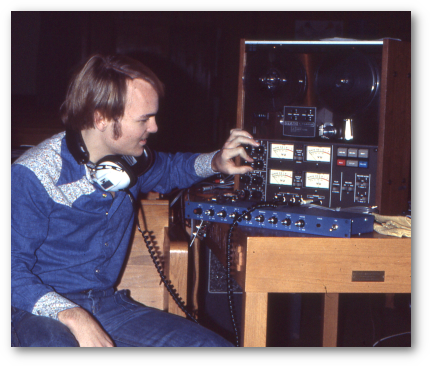
After semi-refurbishing the ol’ TEAC 2340SX 4-track Reel-to-Reel machine in 2016, I have been attempting to digitize most of the catalog of Reel-to-Reel recordings we made over the years dating back to at least 1975. I’ve counted over 40 reels of 1/4″ marvelous magnetic media that is laden with snapshots of history from many, many long hours of musical and other sounds, much of which has now been converted to binary audio data.
It’s been a time consuming process. One reason is the fact that in order to properly transfer from analog to digital, that tape has to play in ‘real time‘. A 7″ reel typically was 1800ft of tape. If it was recorded at the highest speed that most of the tape decks we had access to at the time could run, 7-1/2 IPS (Inches Per Second) you would have roughly 48 minutes of recording time. If you were recording 2-tracks (stereo) you could flip the tape over and record 2-tracks in the opposite direction. If you ran the machine at the slower speed of 3-3/4 IPS you could achieve 1hr 36min per pass. For those reels where the recording speed was 3-3/4″ IPS, I did experiment with running the capture at the higher speed and then digitally converting the sample rate down so the pitch was ‘normal’ but I found the frequency response suffered noticeably. So it was back to ‘real time’ capture for the optimal quality. I did discover one time saving trick. If the tape was recorded in stereo (2-tracks) in both directions, I could capture all 4-tracks in one pass (two tracks sounding backwards) in real time. Then I could digitally reverse the two backwards tracks without any sound degradation. That helped some.
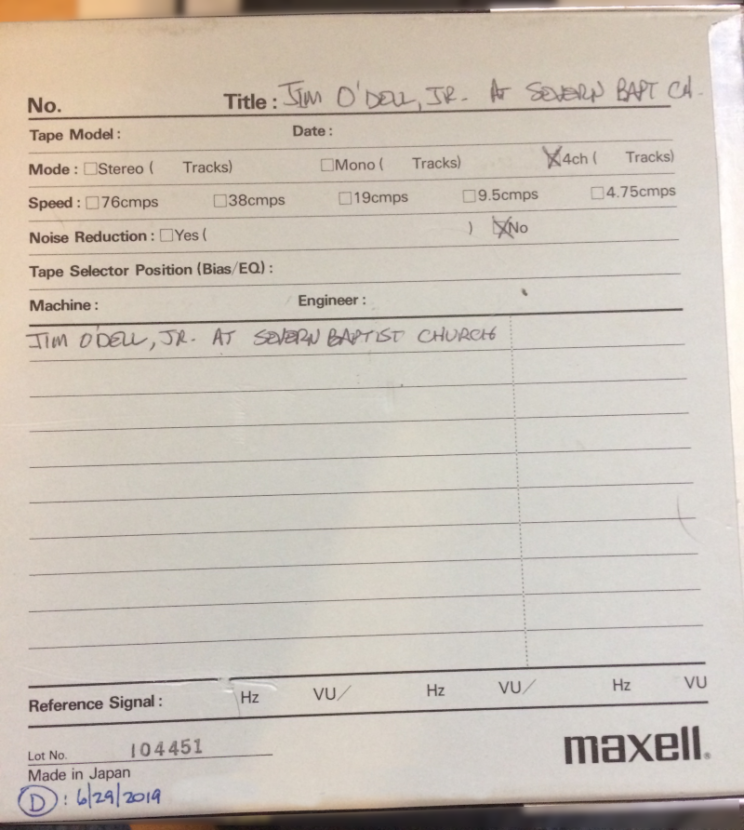
Now the other thing to mention is that we weren’t always very good at keeping ‘session and program notes’. So for instance, despite a box having a label of “Jim O’Dell Jr. At Severn Bapt Ch” it may have no detail on the actual recording contents therein. (That one didn’t even have a recording date!) If I was ‘monitoring’ the capture running in real time, I would try to take notes on the nuggets of audio history found. But often once I was relatively sure the tape was all one speed, I’d start the capture, set the timer on my iPhone for the expected run time, and walk away to do other things until the timer sounded and I’d run back to the computer to stop the completed capture.
I’ve written in the past about the singing group I had the pleasure to work with in my younger years called “The Instruments of Peace” which accounted for quite a bit of the audio recordings over those years. Not only did we occasionally record the concerts which the group presented, but we also produced many of our own Instrumental Accompaniment tracks.
Well, a few months ago, I received a Facebook message from one of the members of the “Instruments of Peace” (IOP), Jenny:
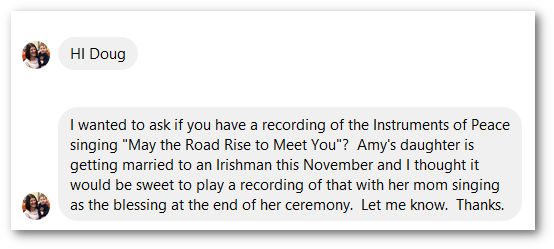 Amy, Jenny’s sister and also a member of IOP, passed away unexpectedly in Nov 2016.
Amy, Jenny’s sister and also a member of IOP, passed away unexpectedly in Nov 2016.
Well, I truly hoped that I could deliver something for my friend in memory of Amy. Did I remember hearing that song being sung somewhere in the archives? I think so…but on which reel and from which concert I could not remember and the lack of detailed ‘session notes’ on the back of the boxes wasn’t helping. Thank goodness I had already captured most of the reels because ‘scrubbing’ through digital audio files was SO much easier than it would have been to thread the many reels of audio tape that may possibly contain the ‘needle in the haystack’.
The first ‘find’ I came across for “May the Road Rise” was actually one of the sessions for the recording of the instrumental accompaniment track we arranged for the song. But there were NO Vocals.
I found one concert recording of the group at a church of which I cannot remember the name, but we didn’t close that concert with that ‘Irish Blessing’ song. I kept searching. Then I found a recording labeled “Instruments of Peace, Ridgecrest 1978 Student Ministries” and lo and behold — “May the Road Rise” was the last song.
I queued up the recording from the beginning and sat back to have a listen. The voices sounded sweet, the performance spot on, and it sounded so good. But you could barely hear the accompaniment — which happened to be the instrumental track that we had produced. Since it was just two tracks, there was no way to bring up the levels of just the accompaniment.
“Hmm,” I said to myself, “since you have the recordings of the original 4-track accompaniment track session — why not merge those tracks with the live recording and do a mixdown? Worth a try…”
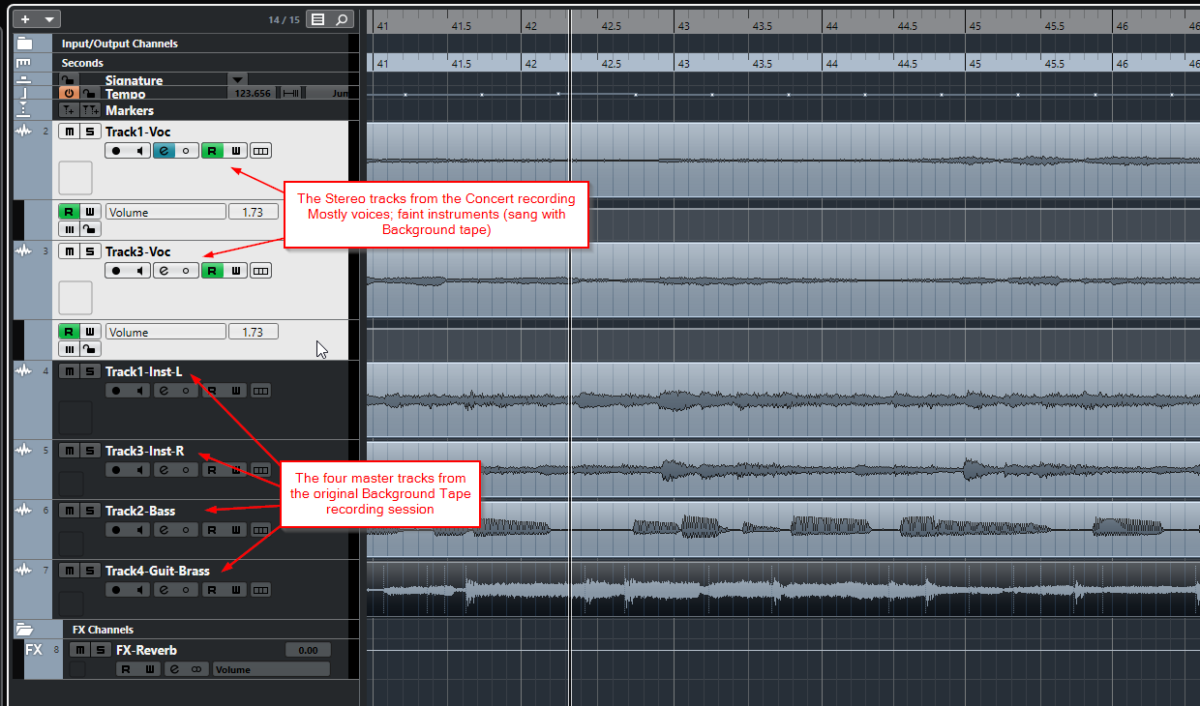
So I pulled the 4-tracks from the instrumental session into the two-track Concert recording project. I lined up the tracks to all start at the same time and hit play.
You could now hear the instruments at the intro of the song and the voices came in and I’m tweaking levels as its playing along and then I realize the voices and the instruments are drifting farther and farther apart the longer song played. This is not an uncommon occurrence in the world of old analog recordings. Reel-to-reel machines were almost never ‘perfect’ in their playback and recording speeds. The two recordings were very close to the same speed but just slightly different, not enough to really notice even a difference in pitch but enough to know they weren’t in sync (just slightly more than a second difference over the length of the entire song).
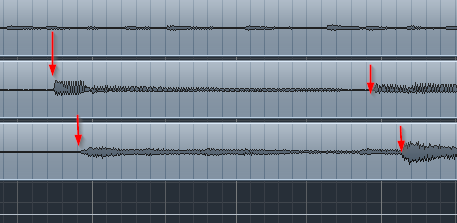
So my Digital Audio Workstation recording platform called Cubase 10 is known for the amazing things it can do with audio files so certainly I should be able to synchronize these tracks that are so close. I started by attempting to calculate the time difference and then tempo-mapping and time signature/measure mapping and hitpoint detection and was getting nowhere closer to a solution. Turns out, I was making this way more complicated than it needed to be. I came across a function Cubase calls ‘AudioWarp’ and could not believe the results. In a nutshell, you basically line up the beginning of the tracks (which I had already done). You then go to the end of the song and find a distinct audio event (like the final chord) which will occur at two different points in time on the different tracks. And then you decide whether you ‘stretch’ the lagging tracks to match the longer or ‘shorten’ the longer tracks to match the shorter. Here we decided to stretch each of the four instrumental tracks. Click and drag! Boom! Repeat 3x! Done! It sounded great.
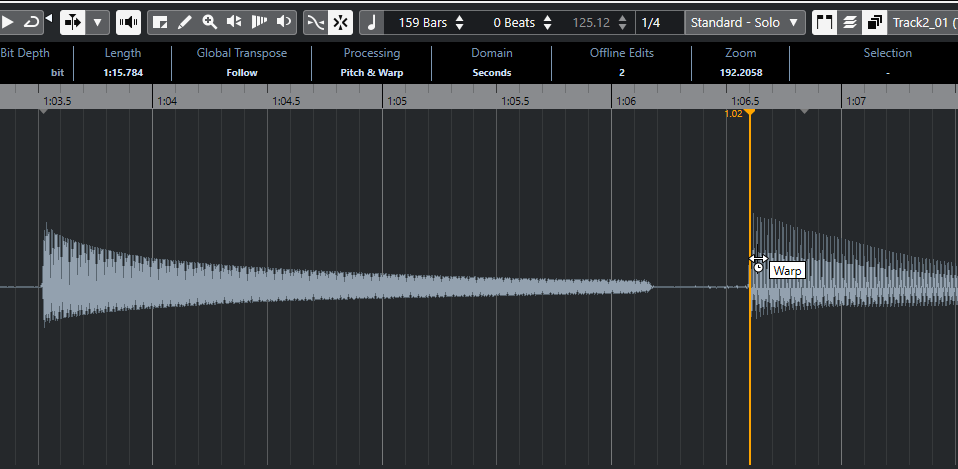
Now that all the tracks lined up, we could mix it. We could now hear the instruments as well as the vocals. A little EQ here, a little noise reduction there, a touch of reverb and I was quite pleased with the result that I immediately sent to Jenny. I truly hope that it was a meaningful moment for the family at the wedding.
The final mix is presented below:
(Instrumental arrangement – D. Jackson/R. Strickland)
Instruments of Peace (at the time of the recording in 1978):
| Jenny Cheston | Soprano |
| Amy Cheston | Alto |
| Amy Hunter | Alto |
| Richard Strickland | Tenor |
| Tim Lester | Bass |
Musicians:
| Debbie Johnson (?) | Piano |
| John Laube | Drums |
| Don & Jim Harding | Trumpets |
| Jeff Jackson | Euphonium |
| Doug Jackson | 12 String Guitar; Electric Bass |